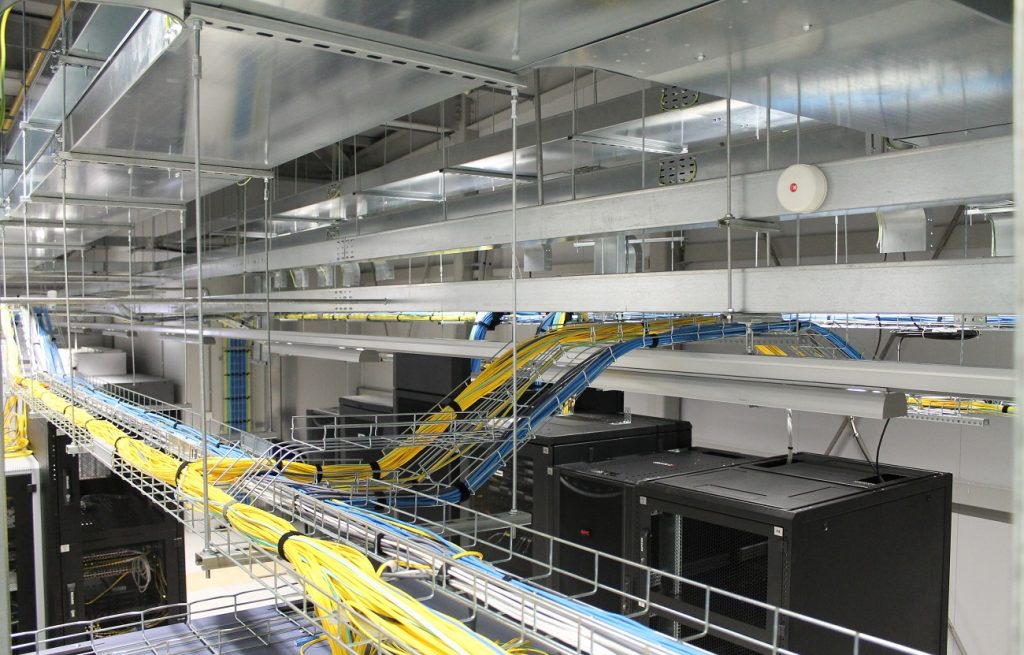Today we decided to talk about the tools, which IT companies and IaaS providers use to automate work with networks and engineering systems.

Implementation of Software Defined Networks
It is expected that with the launch of 5G networks, IoT devices will get a real mass distribution – according to some estimates, their number will exceed 50 billion by 2022.
Experts note that the existing infrastructure will not cope with the increased load. According to Cisco, in two years, traffic passing through the data center will reach 20.6 zettabytes.
For this reason, IT companies spend billions on the development of network infrastructure. For example, Google is laying new submarine cables in Asia and Europe to reduce delays in transmitting data at points, which are remote from data centers. IT giants are also building hyper-scalable data centers – AWS, Microsoft and Google have already spent more than $ 100 billion on their creation.
Obviously, in such (and simpler) systems it is impossible to monitor the correct operation of all switches, servers and cables manually. Software-defined networks (SDNs) and special protocols (such as OpenFlow) can help in such case.
Statista says that by 2021, the volume of traffic passing through SDN systems of data centers will more than double: from 3.1 zettabytes to 7.4 zettabytes. For example, Fujitsu implemented SDN technology in hundreds of its data centers located in different parts of the world. One of the local cloud providers in the USA also uses software-defined networks.
IDC experts expect that the SDN market will continue to grow. By 2021, its volume will reach $ 13 billion, and in 2017 it was estimated as 6 billion.
Go to virtual machines
The popularity of virtualization in recent years has been associated with the development of a large number of tools that automate VM management and increase their availability.
Automation tools are also provided by IaaS providers. For example, a software interface that allows you to pick up a new virtual machine in a couple of minutes.
It is also possible to manage the infrastructure using the API. For example, you can configure the shutdown of virtual machines according to a given schedule and not to pay for their “free” work. The API can also be used to change the number of cores and the amount of RAM.
Virtualization solution management systems are developing towards the use of machine learning technologies that automatically distribute the load between VMs. For example, the VMware NSX virtual environment solution has this functionality. It already helps IaaS providers to distribute the load in multi-cloud and hybrid environments
Implementation of DCIM Systems
DCIM solutions (Data Center Infrastructure Management) are software that monitors the operation of data center engineering systems: the energy consumption of servers, storages, routers, power distributors, humidity levels, etc.
In the first case, the DCIM system manages the electricity and water supply, air conditioning for server rooms and video surveillance throughout the building. In the second, it automatically stabilizes the output voltage in the network, protecting servers and eliminating micro-breaks.
Artificial intelligence systems have also reached this area. Smart algorithms predict server failures by analyzing their “behavior”. For example, Litbit is working on Dac technology. The system monitors the state of physical server using sensors installed in the engine room. They analyze ultrasonic frequencies and floor vibrations.
Based on these data, Dac detects anomalies and determines whether all equipment is operating correctly. If there is a problem, the system notifies the operators of the data center or independently disconnects the faulty servers.
So far, these technologies are not very widespread, but recently they have significantly strengthened their positions. According to analysts, in 2022 the volume of the DCIM market will be $ 8 billion, which will be twice as high as in 2017. Soon, these solutions will begin to appear in all major data centers.